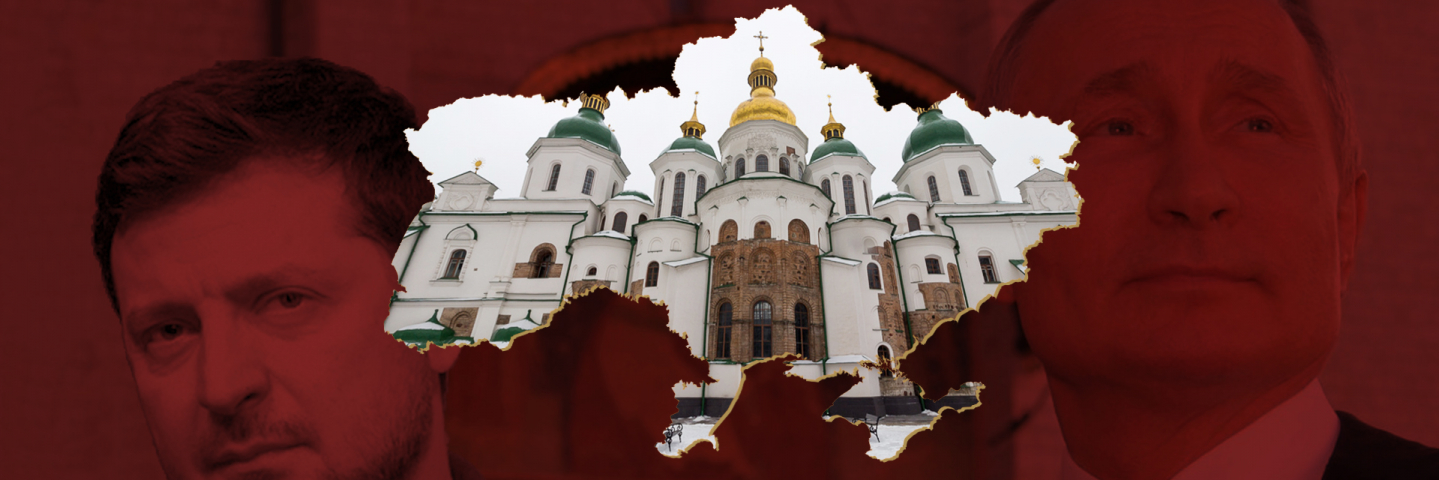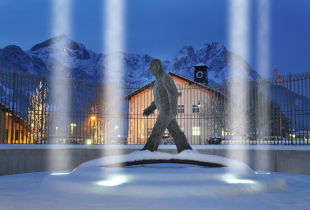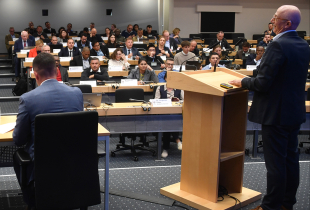
Assessing Ukraine’s Counter-Offensive: Initial Thoughts
Introduction
Through the spring of 2023, Ukrainian Armed Forces (UAF) moved from “preparing the battlespace” by targeting Russian Armed Force (RAF) supply chains, logistics hubs, and military headquarters in Luhansk, Mariupol and Melitopol, to using long-range precision strikes (e.g. Storm Shadow and HIMARS) to paralyze, “disorganize,” and degrade Russia’s fighting ability. In this dimension of the war, Ukraine has advantage on nearly every level – from tactical intelligence-gathering to hits on fuel depots. Real-time intelligence data is of crucial importance for Ukraine at this stage, so information (particularly high-precision satellite images) may be even more valuable than ammunition.
In May, UAF began reconnaissance-in-force attacks across the entire 1000km front line, from Kherson to Kupyansk, to test Russian military defensive line vulnerabilities and strengths, and to maintain uncertainty as to the location of the main push by keeping “the fog of war” as thick as possible. The Nova Kakhovka dam explosion on 6 June which caused a breach and extensive flooding downstream allowed Russia to redirect troops from Kherson to Zaporizhzhya region. However, water levels are receding and while there is much mud and the territory will remain inaccessible for a few more weeks, eventually this front will come back into play. Preparing the battlefield and probing reconnaissance-in-force operations are conditions-based and can last weeks if not months – that is, until the conditions are met – before reserves are committed to force or exploit a breach.
Ukraine has created 3 corps composed of mechanized (or motorized) infantry brigades, including approximately 9 maneuver brigades armed largely with Western-provided equipment and at least 3 generated by Ukraine. These units consist of newly mobilized personnel, with a core of experienced soldiers. In addition, Ukraine’s Ministry of Internal Affairs has constituted several support assault brigades (“Offensive Guard”). A large-scale breakthrough or breach begins when 2 or 3 brigades push in the same direction. One Ukrainian tank battalion can deploy 31 tanks, and each brigade has 3 tank battalions and 1 or 2 mechanized infantry battalions. Hence one brigade has over 250 armored units, 2 or 3 brigades between 500 and 750 tanks, and armored vehicles. These brigades need to fight through 3 Russian defensive lines and fortification to a depth of 30km.
The objective of the UAF counter-offensive is to liberate as much occupied Ukrainian territory as possible, in order to fulfill the overall Ukrainian war aim of restoring Ukrainian control over all of its territory, including Donbas and Crimea. Success here is predicated on favorable battle-field dynamics. Territory that is not liberated in the current offensive could be the target of a subsequent offensive, perhaps in 2024. This effort could deploy with an additional 4-6 new brigades and include several squadrons of F-16 able to execute air-land battle (one brigade consists of 40 planes), with the aim of achieving “air superiority” in order to secure additional advances.
Assessment
An “early days” or “too early to tell” mantra dominates current assessments of this first counter-offensive in its initial phase and is focused on short-term goals. In addition, not only is there is no single definition of “success,” but expectations in Russia, Ukraine, and the West differ. Gen Valeriy Zaluzhnyy, UAF C-in-C, stated that the Ukrainian offensive “continues as planned.” President Putin recently noted that Russian defense holds (“Russia repels all Ukrainian assaults”), dismissed the idea of retreat, and rejected the notion that Russia envisages a new round of mobilization or even full martial law. Putin is the master of moving the goal posts and changing the narrative as to what constitutes victory. As long as Putin can maintain majority support and his regime is secure, he will be able to spin almost any end to hostilities short of February 23, 2023, 2022 borders a “victory.” Lastly, Ukraine’s effective and necessary Operational Security further limits our understanding of progress. These caveats aside, five considerations can be highlighted.
First, while we can quantify UAF, it is harder to assess quality, its state of readiness, NATO training, mastering of equipment, and ability to undertake combined arms without air superiority (NATO’s approach). The offensive is a test of the U.S.-led strategy to train, equip, and prepare Ukrainian forces to break through Russia’s fortified lines. The main benefit of this equipment is its durability and survivability on the ground, but does Ukraine have sufficient enabling capabilities for Ukraine’s offensive, such as breaching equipment, mine-clearing machines, and bridging gear? Can Ukraine adopt NATO’s dynamic “Forward Defense” maneuver warfare without necessary air support? Does graduated escalation reflect equipment reality and rationality, or Soviet thinking? Ukrainian morale is not in doubt and public support for the war has only consolidated.
Second: “success against what?” Russia has constructed three lines of defense (“Dragons Teeth”), but ‘Maginot’ and ‘Mannerheim Line’ analogies do not appear relevant. Extensive fortifications do not comprehensively cover the entire front line. The quality and number of Russian “trench troops” per km is variable. An organized withdrawal from one line to the next (making full use of the defensive depth) may become a disorganized rout that can be exploited. While Russian morale is low, bestolkovshina (‘useless actions’), pokazuha (‘grandstanding’), and corruption are all high. Ukraine focuses on incremental territorial gains (“village-by-village”) having a cumulative effect, while Russia targets Ukraine’s operational center of gravity – its armor. Minefields are an area of relative Russian strength. Mine clearing complicates and slows Ukrainian advances, as cleared channels can be targeted by Russian artillery. Wagner PMC has essentially disappeared as a fighting force in the Ukrainian theater. Wagner’s recruitment pool had dried up as 6-month prisoner contracts signed in January 2023 have expired and Russian prisons are now the sole recruiting preserve of the Russian MoD. Prigozhin appears to have overplayed his hand. Are benefits accrued through Russian chain-of-command consolidation offset by reduced troop quality?
Although the air space is contested, Russia on balance has greater air power than Ukraine. Russia uses helicopters to target Ukrainian armor as it is reluctant to commit its fixed wing aircraft to a close air support role. In terms of air defense, Ukraine deploys Strela 10, Avenger, Strike M, and could bring forward other more capable air defense systems against Russian helicopter threats, such as SHORAD. Both Russia and Ukraine experiment. Russian “gliding bombs,” which can be dropped some 5-10 km away from the target but lacks precision. It is remarkable that 15 months into the war, Russia is still unable to produce a workable strike drone (such as the Bayraktar) and so continues to rely on the Iranian Shaheeds. Although Ukraine does not have “air superiority,” neither does Russia. As the air is “contested,” “mutual air denial” has a better purchase on reality. Russia has deployed brigades of its largely preserved 58th Army located south of Tokmak as a reserve maneuver force capable to plugging breaches in its third defensive line. However, each time there is RAF movement, UAF can target with long range precision systems. Russia’s defensive lines are not Potemkin-like but can be breached, though breaching will be hard fought.
Third, Ukrainians have chosen the most rational strategy of probing attacks, as concentrating the majority of (or even substantial) Ukrainian forces in one direction would be deadly given Russian advantage in the air. We can note two major Ukrainian successes. Given the number of actors on the ground (media, activists, etc.) the Ukrainians are remarkably successful at controlling information flow around the offensive without resorting to outright censorship. Ukraine also manages to maintain momentum by moving the sequence and direction of attacks daily which minimizes losses. Good aerial pictures and night vision equipment enhance awareness as does actionable real-time intelligence.
Fourth, there is a recognition that one of the main objectives of the offensive is to demonstrate progress to the international community and so maintain western support. Although there is a recognition that this will be a long fight, both Ukraine and NATO members would like to see tangible measured progress by the July 11-12th NATO Summit. The encirclement and recapture of Bakhmut might be one symbolic example. Ukraine’s success and continued active support requires the Western information space to believe in them. The stream of information supplied by Russia’s Ministry of Defense “makes no sense.” There appears to be no connection with the reality on the ground, in terms of Patriot or HIMAR systems destroyed, and official information is actively criticized from the Wagner group and some Russian milbloggers. For Russia, Ukraine’s counter-offensive creates a problem for media representation and readily accessible reality. Conflict in information space will be interesting to watch.
Fifth, looking to the end stage of the counter-offensive, what dilemmas might arise? The Siverskyy Donets flows past Luhansk, crosses into Russian territory and falls into the Don river which runs to Taganrog Bay on the Sea of Azov. To minimize UAF military casualties and losses and in adherence to military logic, the UAF could enter Russian territory, use the Siverskyy Donets, and then the Don as a secure flank, and destroy Russian troops in Ukraine from Russia, rather than confining the counter-offensive to within Ukraine’s state border. Western allies currently advise against incursions into Russia and do not want western equipment to be included, seeking to reduce this as an option. However, if the Ukrainian choice is between completing the counter-offensive to recapture Donbas while minimizing Ukrainian military casualties by entering Russian territory or maintain, not potentially reduce, western support, which choice will Kyiv make when assessing the balance of risks?
Conclusion
Winning military operations does not necessarily mean winning and terminating the war. All wars that last more than a year are protracted and such wars are difficult to conclude, especially when “It is up to the loser to decide when a war is over.” If this is so and if it is safe to assume that Putin will never admit Russia has lost on his watch, then even if militarily defeated on Ukraine’s territory, Putin can prosecute a strategy of wreckage and ruin, one designed to outlast Ukraine in a war of attrition given the belief the west is incapable of delivering support over time.
In response, Ukraine and its partners need a long-term theory of Ukrainian victory “premised on endurance, addressing Ukraine’s long-term force quality, capability, and sustainment needs.” In June 2023, Ukraine’s choice was either to sue for peace or begin this counter-offensive with the forces and capabilities it had to hand. Some western assistance (F16 fighter jets, for example) is clearly predicated on long-term support. The main focus of the Vilnius NATO Summit will be to demonstrate western support of Ukraine for the longer term, focusing on reconstruction programs and non-military financial assistance, paving the way for sustaining Ukrainian offensive, even if a NATO membership timeline is not offered.
If retaking Donbas through military force is the first counter-offensive, might one logic of a second counter-offensive be to retake Crimea by diplomatic negotiation/compellence? Might a new European recovery program to sustain Ukraine then be considered the third and “Other Counteroffensive to Save Ukraine.” A theory of Ukrainian victory needs its corollary – a theory of managing a defeated Russia, if only because, as Michael Kofman persuasively argued, “the way this war ends could lead to a follow-on war. After all, the current conflict is a continuation of the original 2014 Russian invasion of Ukraine.”
GCMC, Garmisch-Partenkirchen, Oslo, and Boson, June 22, 2023
About the Authors
Dr. Pavel K. Baev is Research Professor at the Peace Research Institute Oslo (PRIO). He is also a Senior Non-Resident Scholar at the Brookings Institution (Washington DC) and a Senior Research Associate with the French International Affairs Institute (IFRI, Paris). Dr. Baev specializes in Russian military reform, Russian conflict management in the Caucasus and Central Asia, energy interests in Russia’s foreign policy, and Russian relations with Europe and NATO.
Dr. Dmitry Gorenburg is Senior Research Scientist in the Strategy, Policy, Plans, and Programs division of the Center for Naval Analysis, where he has worked since 2000. Dr. Gorenburg is an associate at the Harvard University Davis Center for Russian and Eurasian Studies and previously served as Executive Director of the American Association of the Advancement of Slavic Studies (AAASS). His research interests include security issues in the former Soviet Union, Russian military reform, Russian foreign policy, and ethnic politics and identity. He currently serves as the editor of Problems of Post-Communism.
Dr. Graeme P. Herd is a Professor of Transnational Security Studies in the Research and Policy Analysis Department at the George C. Marshall European Center for Security Studies. His latest books include Understanding Russia’s Strategic Behavior: Imperial Strategic Culture and Putin’s Operational Code (London and New York, Routledge, 2022) and Russia’s Global Reach: A Security and Statecraft Assessment, ed. Graeme P. Herd (Garmisch-Partenkirchen: George C. Marshall European Center for Security Studies, 2021).
The George C. Marshall European Center for Security Studies
The George C. Marshall European Center for Security Studies in Garmisch-Partenkirchen, Germany is a German-American partnership and trusted global network promoting common values and advancing collaborative geostrategic solutions. The Marshall Center’s mission to educate, engage, and empower security partners to collectively affect regional, transnational, and global challenges is achieved through programs designed to promote peaceful, whole of government approaches to address today’s most pressing security challenges. Since its creation in 1992, the Marshall Center’s alumni network has grown to include over 15,000 professionals from 157 countries. More information on the Marshall Center can be found online at www.marshallcenter.org.
The Clock Tower Security Series provides short summaries of Seminar Series hosted by the George C. Marshall European Center for Security Studies. These summaries capture key analytical points from the events and serve as a useful tool for policy makers, practitioners, and academics.
The articles in the The Clock Tower Security Series reflect the views of the authors (Pavel Baev, Dmitry Gorenburg, and Graeme P. Herd) and are not necessarily the official policy of NATO, the United States, Germany, or any other governments.

